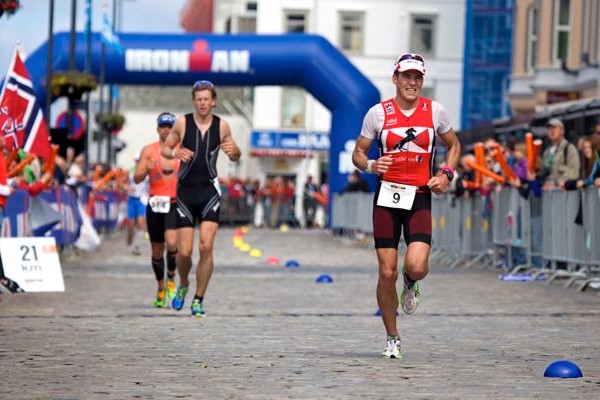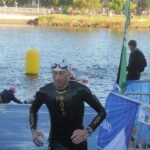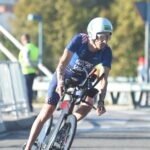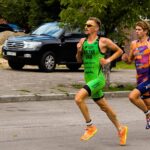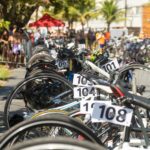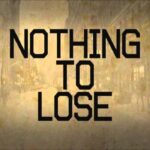In my last article that, well, focused on focus, I introduced you to what focus is, its value in your triathlon training and racing, common obstacles to effective focus in triathlon, and how your focus style influences your triathlon efforts. This article will get really practical by showing you what you should focus on and sharing with you focus “tools” you can use to keep a laser-sharp focus on what will enable you to train and race your best consistently.
Foundation of Focus Control
Developing focus control before and during training and races is essential to ensure that your focus helps rather than hurts your triathlon efforts. Your goal is to identify what you need to focus on and what distractions may arise and then actively focus on the good things and avoid the bad things. The first step in establishing control of your focus is to gain an understanding of the general areas in which you should direct your focus. These broader areas act as the foundation for more specific tools you can use to control your focus.
Focus on what you can control. A major focusing problem I see with many triathletes is that they focus on things over which they have no control. Triathletes worry about their competitors, the course, the weather, or the conditions, to name a few things outside of your control. This focus has no value because you can’t do anything about them. This focus on things over which you have no control hurts performance for several reasons. First, focusing on things you can’t control has a negative impact on you psychologically, emotionally, and physically. Feeling out of control hurts your confidence and motivation because you feel helpless to do anything about those things you can’t control. Second, it also creates anxiety, fear, frustration, and anger because we humans don’t like feeling out of control (and there are plenty of control freaks in our sport). These unpleasant emotions create physical discomfort that exacerbates the feelings of loss of control because you now feel out of control of your own body. Third, focusing on things over which you have no control distracts you from what you need to focus that is within your control. The fact is, there’s only one thing that you can control, and that is yourself, for example, your mind, your body, and your actions. If you focus on those things, you’ll be more confident and relaxed, and you’ll be better able to focus on what you need to do to perform well.

Outcome vs. process focus. Perhaps the greatest obstacle to prime focus is having an outcome focus before and during a race. Outcome focus involves focusing on the possible results of a triathlon: winning, losing, rankings, or who you might beat or lose to. In contrast, a process focus means focusing on specific aspects of your training and racing that are necessary for you to perform your best, for example, technique, pace, good transitions, fueling and hydration, and how your body feels. In my view, an outcome focus spells doom for triathletes because it prevents you from focusing on the process, that is, what you need to perform your best.
Thinking vs. focusing. A mistake many triathletes make is that they equate thinking with focusing. They believe that if they’re thinking about, for example, an upcoming race, then they’re also focusing on it and it will help their performance. However, there is a big difference between thinking and focusing.
Thinking is connected to your investment in triathlon, that is, how important our sport is to you. It is often about things that not only don’t help performance, but actually interfere with it, such as results, other competitors, and expectations you have. Thinking is analytical, judgmental, critical, and comparative. If you make a mistake (e.g., go out too fast on the bike) or perform poorly in a race when you’re in thinking mode, it hurts your confidence and causes negative emotions such as frustration and anger. Thinking actually interferes with your ability to focus in a way that will help your efforts and will cause you to lose motivation and confidence, feel anxiety, and it will cause your performances to deteriorate.
In contrast, focusing simply involves attending to internal or external cues. This process is impartial, objective, unemotional, and detached from judgment or evaluation. If you make a mistake on something on which you are focusing, you’re able to accept it, not be overly disappointed by the failure, and shift your focus back onto your performances. In focus mode, you’re able to use the failure as information to correct the problem, remain positive, and focus better in the future. It also ensures that you pay attention to things that will help you perform your best in the moment.
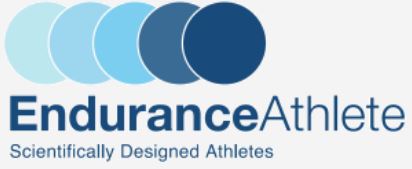
Focus Tools
For you to focus effectively and consistently, there are a number of focus tools you can add to your mental toolbox.
Have clear goals and process. A simple reality of focusing is that you can’t focus on something if you don’t know what you need to focus on. So, the first step in developing prime focus involves knowing what specifically you should be your focus. You can establish this focus by, first, specifying your goal for whatever you are doing. For example, in training, if you’re doing indoor bike intervals, your goal might be to maintain 250 watts through the six 3-minute intervals and that would be your singular focus. If it’s in a race, your goal might be to have fast T1s and T2s, so you would focus on your transition process for each as you enter the transition area.
Identify and limit distractions. No matter how clear your focus goals are, you won’t be able to focus well if you are distracted by things in your external and internal environments. You want to scan your training and race settings, as well as the thoughts and emotions that can clutter your mind, and identify the most prominent distractions that prevent you from achieving and maintaining prime focus. Common external distractions include teammates, competitors, coaches, family, and friends. Typical internal distractions include negative thoughts, irrelevant thoughts, unpleasant emotions, and physical anxiety. Once you have identified these distractions, you can develop strategies to limit them. For example, if you are distracted by your competitors before an event, you can find a secluded place away from them where they won’t intrude into your mind. If you are feeling anxious before a competition, you can listen to music and focus on your breathing to take your mind off of and lessen your anxiety.
Keywords. Once defined goals are established, you now have clarity on what you want to focus on. However, you can’t simple repeat that goal in your mind as you train or race; too many words. The next step is to take those goals and create focus keywords that you can repeat to yourself during your training or race efforts. A keyword is a short and active descriptor, ideally one or two words, of what you want to focus on at different points in a race.

Whatever you want to focus on at the start, during the swim, bike, or run, or in transitions, create a simple keyword to remind you of that focus. These keywords can be technical (e.g., “elbow high” in the swim), tactical (e.g., “don’t rush” in transitions), mental (e.g., “stay positive”), or performance (e.g., “finish strong”). Then, just before you begin and while you’re training or racing, repeat the keyword to yourself (out loud if necessary). If you’re saying the keyword, you have a much better chance of paying attention to whatever you’re working on.
Returning to the bike intervals example I described above, your focus cues might be “250” or “keep pushing” to maintain your goal wattage. For the race example, focus cues might include “breathe deep” to settle yourself down as you enter the transition area and “one step at a time” to remind you to not rush through your transition routine.
Mental imagery. Another valuable tool for focusing before a race is mental imagery. Also referred to as visualization, imagery involving seeing and feeling yourself perform in your mind’s eye. Imagery offers several ways to help you to focus better. First, if you are imagining yourself swimming, biking, or running, you are focusing on your performances and, as a result, are blocking out unwanted internal or external distractions. Additionally, the very act of imagery strengthens your ability to focus because it takes focus to maintain imagery of your performances.
Breathing. Breathing is a key tool that is used in a variety of mental calming and physical relaxation methods including meditation and yoga. Much like a keyword, when you focus on your breathing, it has the effect of narrowing your attention onto yourself and blocking out distractions. Breathing also offers other mental and physical advantages. For example, the type of breathing you use can get you fired up (i.e., intense breathing) or calmed down (i.e., deep, slow breathing) before a race. Additionally, breathing can a helpful tool for increasing the oxygen in your system and adjusting your intensity up or down to its ideal level.
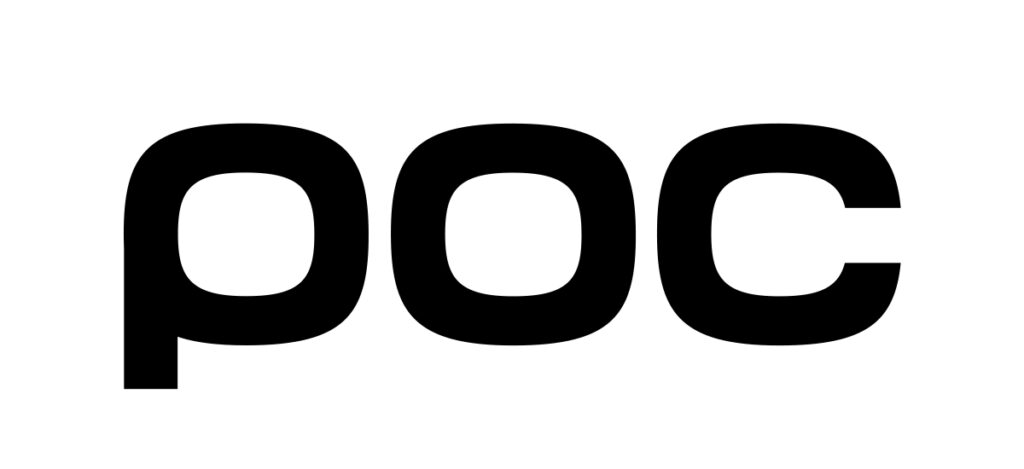
Routines. Routines offer widespread benefits including helping you focus on your training or race preparations. By focusing on your routine, you are concentrating on aspects of your performance that will assist you in performing your best. In doing so, you also block out distractions. By adhering to your routine, you ensure total readiness and the consistency of a routine increases your comfort and confidence by creating a situation that is familiar, predictable, and controllable.
Messages on equipment. Finally, an odd, yet very effective, tool for helping you focus, particularly regaining an ideal focus when you become distracted, involves writing messages on your hand or your bike. Let me explain how this works. In the heat of a training session or a race, it’s easy to get so wrapped up in competing that you forget to focus on things that will help you perform your best. For example, if you get nervous before a race, the physiological manifestations of your anxiety can cause you to become overwhelmed by and fixated on the physical discomfort, whether a racing heart or tense muscles. It is difficult to have the wherewithal to break free of this absorption and redirect your focus in a positive way. That’s where the messages on your hand or bike can come in. If, while you are distracted by your nerves, you look at messages (e.g., breath, calm) you have written on your hand and bike, it reminds you what you should be focusing on and helps you break from of the unhealthy focus and regain focus on what will help you perform your best.
Three Ps
Finally, I have a rule you can follow that will help you identify what general areas you should focus on in your triathlon training and racing. I call it the three Ps. The first P is positive. You should focus on positive things that will help your performance and avoid negative things that will hurt it.
The second P is process. As I explained above, you should focus on what you need to do to perform your best, such as technique or pace, not on results or your competitors that will distract you.
The third P is present. You should focus on what you need to do right now to perform well at this moment. Thinking about a slow swim as you get on your bike or how difficult the run will be when you leave T2 just won’t help you. You shouldn’t focus on the past because you can’t change it. You also shouldn’t focus on the future because you can’t change it directly. The only way to control the future is to control the present. The only way to control the present is to focus on it.
Do you want to take the next step in training your mind to perform your best in training and on race day? Here are four options for you:
- Read my latest mental training book: Train Your Mind for Athletic Success: Mental Preparation to Achieve Your Sports Goals.
- Listen to my Train Your Mind for Athletic Success podcast.
- Take a look at my online mental training courses.
- Schedule a 1:1 session with me.

